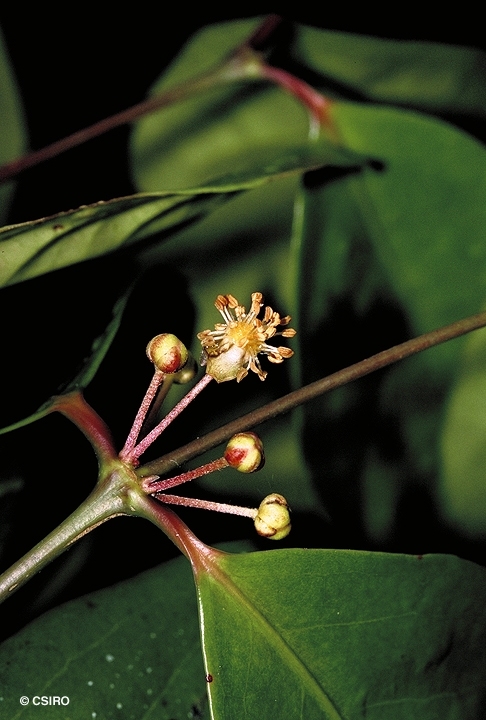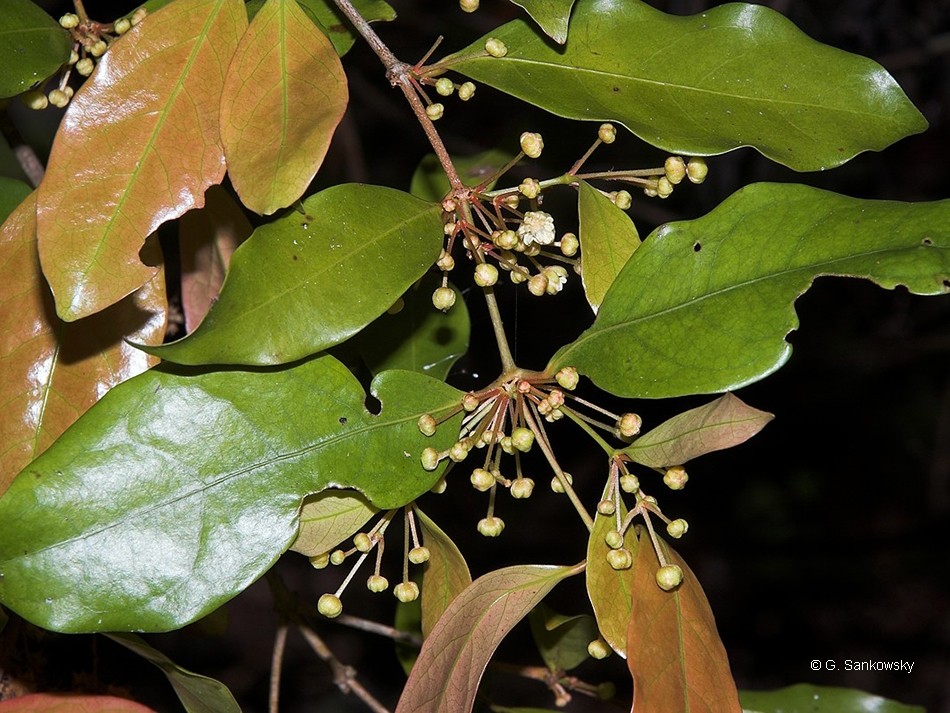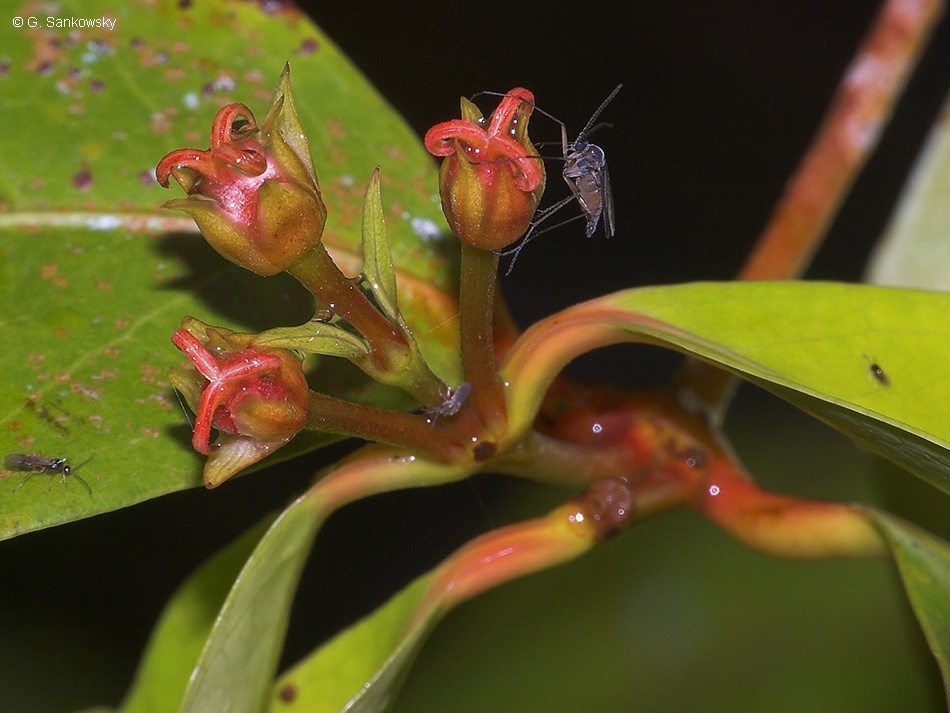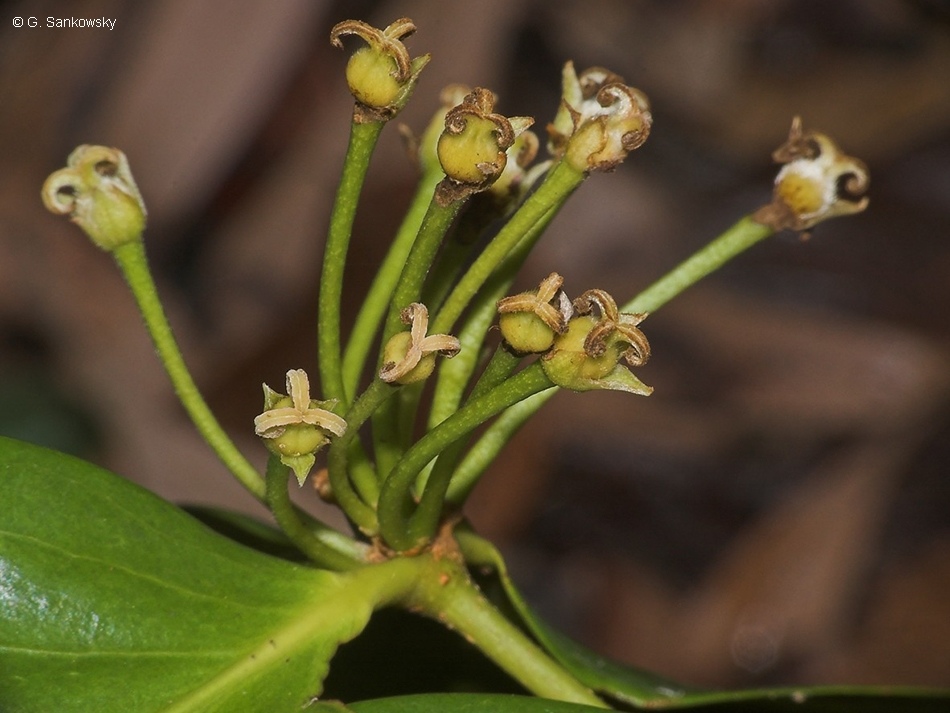Australian Tropical Rainforest Plants - Online edition
Dissiliaria tuckeri P.I.Forst.





Forster, P.I. (1997) Austrobaileya 5(1): 19-21. Type: Queensland. Cook District: Gap Creek, c. 22 miles [36.7 km] SE of Cooktown, May 1969, L.S.Smith 14419 (holo: BRI; iso: NSW).
Tree to 30 m tall, trunk buttressed, bark rough, flaky, blaze pink.
Stipules lanceolate-obovate, 2.2-4 mm long, glabrous. Leaves glabrous,. New leaves bright red-pink; petioles 4-8 mm long, channelled on top, glabrous. Lamina elliptic, oblanceolate, 60-170 x 2-75 mm, margins entire, 8-10 lateral veins on each side of midrib. Apex acute, acuminate, obtuse to rounded; base cuneate or rounded.
Male inflorescence and flowers not seen. Female inflorescence of 1-2 flowers in upper leaf axils, peduncles 2-4 mm long. Female flowers with pedicels 15-33 mm long, glabrous; styles 3, 4-4.5 mm long, connate for 1 mm at base, strongly recurved.
Subglobose, 13-15 mm long x 18 mm diameter, covered with minute prickles (muriculate). Seeds 9 mm long x 7 mm wide x 1.5-2 mm thick, smooth, shiny brown.
Features not available.
This species may be distinguished from others most readily by the number of lateral veins (8-10), larger stipules (2.2-4 x 1.8-2.2 mm), and the longer (4-4.5 mm) and recurved styles.





